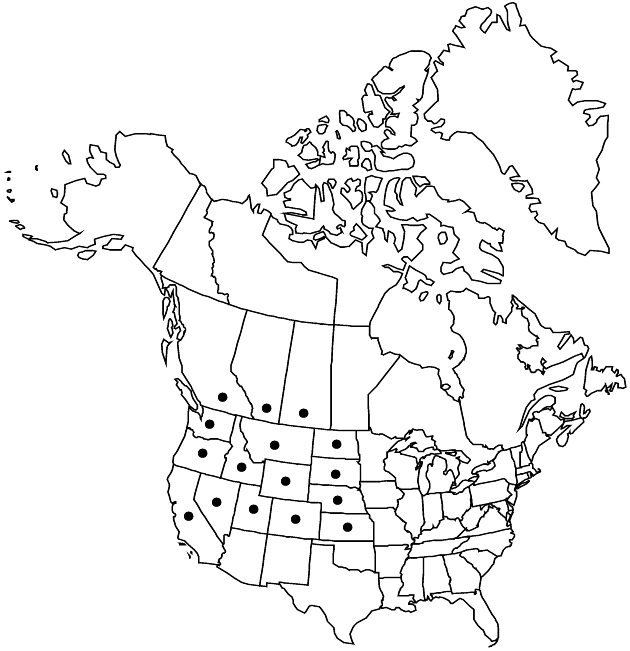Difference between revisions of "Erigeron pumilus"
Gen. N. Amer. Pl. 2: 147. 1818.
FNA>Volume Importer |
imported>Volume Importer |
||
| Line 8: | Line 8: | ||
}} | }} | ||
|common_names=Shaggy fleabane | |common_names=Shaggy fleabane | ||
| + | |special_status={{Treatment/ID/Special_status | ||
| + | |code=E | ||
| + | |label=Endemic | ||
| + | }} | ||
|basionyms= | |basionyms= | ||
|synonyms= | |synonyms= | ||
| Line 20: | Line 24: | ||
-->{{Treatment/Body | -->{{Treatment/Body | ||
| − | |distribution= | + | |distribution=Alta.;B.C.;Sask.;Calif.;Colo.;Idaho;Kans.;Mont.;N.Dak.;Nebr.;Nev.;Oreg.;S.Dak.;Utah;Wash.;Wyo. |
|discussion=<p>Varieties 2 (2 in the flora).</p> | |discussion=<p>Varieties 2 (2 in the flora).</p> | ||
|tables= | |tables= | ||
| Line 50: | Line 54: | ||
|basionyms= | |basionyms= | ||
|family=Asteraceae | |family=Asteraceae | ||
| − | |distribution= | + | |distribution=Alta.;B.C.;Sask.;Calif.;Colo.;Idaho;Kans.;Mont.;N.Dak.;Nebr.;Nev.;Oreg.;S.Dak.;Utah;Wash.;Wyo. |
|reference=None | |reference=None | ||
|publication title=Gen. N. Amer. Pl. | |publication title=Gen. N. Amer. Pl. | ||
|publication year=1818 | |publication year=1818 | ||
| − | |special status= | + | |special status=Endemic |
| − | |source xml=https:// | + | |source xml=https://bibilujan@bitbucket.org/aafc-mbb/fna-data-curation.git/src/bb6b7e3a7de7d3b7888a1ad48c7fd8f5c722d8d6/coarse_grained_fna_xml/V19-20-21/V20_601.xml |
|tribe=Asteraceae tribe Astereae | |tribe=Asteraceae tribe Astereae | ||
|genus=Erigeron | |genus=Erigeron | ||
Revision as of 20:50, 27 May 2020
Perennials, 5–30(–50) cm; taprooted, caudices with relatively short and thick branches. Stems erect, hirsute to hispido-hirsute (often with slightly deflexed hairs), minutely to stipitate glandular. Leaves basal (persistent) and cauline (petioles prominently ciliate, hairs thick-based, spreading); basal blades oblanceolate to narrowly oblanceolate, 20–80 × 1–4(–5) mm, margins entire, faces hispid to hispido-hirsute, little, if at all, glandular; cauline on distal 1/2–3/4 of stems, blades becoming linear-lanceolate, little reduced distally. Heads 1–5(–50). Involucres 4–7 × 7–15 mm. Phyllaries in 2–4 series (midvein region orange to yellowish), hirsute to hispido-hirsute, minutely glandular. Ray florets 50–100; corollas white to pink, less commonly bluish, 6–15 mm, laminae reflexing. Disc corollas 3–5 mm (throats distinctly indurate and inflated, glabrous or sparsely puberulent with glandular-viscid, hairs blunt). Cypselae 1.4–1.8 mm, 2-nerved, faces sparsely strigose; pappi: outer of setae or subulate scales (0.1–0.3 mm), inner of 12–27 bristles.
Distribution

Alta., B.C., Sask., Calif., Colo., Idaho, Kans., Mont., N.Dak., Nebr., Nev., Oreg., S.Dak., Utah, Wash., Wyo.
Discussion
Varieties 2 (2 in the flora).
Selected References
None.
Key
| 1 | Pappi: outer of coarse bristles or setiform scales, inner of 12–20 bristles; rays usually pink, sometimes white; indurate portion of disc corollas relatively dull, glabrous or slightly puberulent | Erigeron pumilus var. intermedius |
| 1 | Pappi: outer of inconspicuous, well-developed setae, inner of 15–27 bristles; rays white; indurate portion of disc corollas shiny, glabrous | Erigeron pumilus var. pumilus |